Who was admitted to Pleiestiftelsen Hospital?
Pleiestiftelsen was established as an institution for people with leprosy. The majority were from Western Norway, but there were also patients from Eastern Norway, Northern Norway and even one from Russia. Very few patients were from the city of Bergen. The majority came from the coastal areas north and south of Bergen.
In the first few years after Pleiestiftelsen Hospital opened, the level of occupancy was so high that applicants had to be triaged. Head Physician Løberg writes in a letter to the district medical officers that they would primarily admit people who they were concerned might have children and thus pass on the disease. At that time, most doctors namely believed that the disease was hereditary.
A conflict of interest gradually arose between doctors on the one hand and people living in the districts on the other. The Head Physician wanted to admit those who exhibited early signs of the disease, in the hope of stopping or slowing down its progression. However, local authorities would primarily apply for places for ‘their most helpless’ – those who were severely affected by the disease and who were considered a particular burden for those around them. The sick would not normally apply for a place unless they could no longer support themselves or felt they were a burden on their family.
Head Physician Løberg considered it hugely problematic that most people were only admitted once the disease had progressed too far, making it unlikely that anything could be done to aid any recovery, and even making it difficult to ensure that they had ‘a tolerable existence for the rest of their days’.
It’s unlikely those applying for a place had any hope of recovery. In many cases, consideration for their family was probably what weighed heaviest on them. The financial benefits of admission, for both the family and local community, were obvious, as the state paid the costs instead of the family, or local poor-law authorities having to support the sick.
Towards the end of the 19th century and in the 20th century, more and more people were admitted in the early stages of the disease, partly because there were fewer people with leprosy and more vacant places at the hospitals, while it had also become known that the disease was infectious.
After an Act in 1885 made forced hospital admissions possible, the provision was sometimes used, but not very often. Between 1896 and 1900, two women were admitted to Pleiestiftelsen Hospital against their will. A young man was also brought ashore after taking a job on a ship, despite this being forbidden by the district medical officer. Between 1901 and 1905, two women were admitted by force. One of them, ‘who did not want to be separated from her husband’, was taken from her home to the hospital by the sheriff. Between 1906 and 1910, a former teacher was admitted with police assistance. He had at first moved in voluntarily but then escaped and had to be readmitted by force.
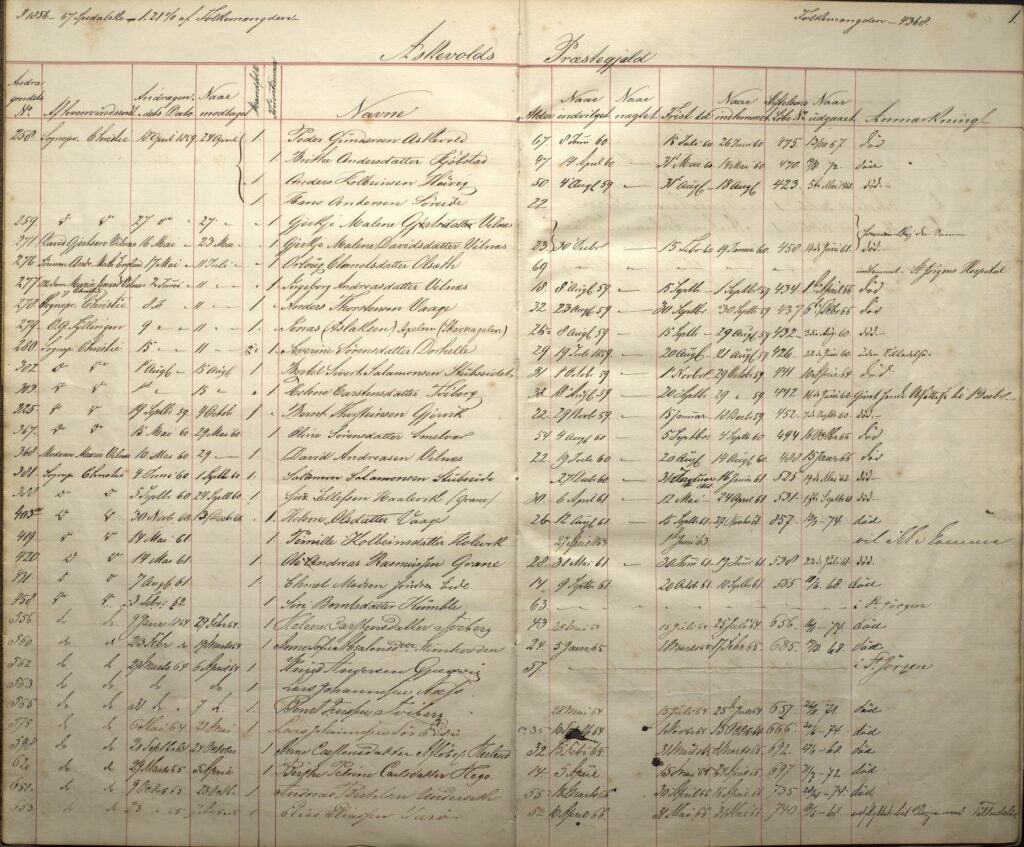
Bergen City Archives.
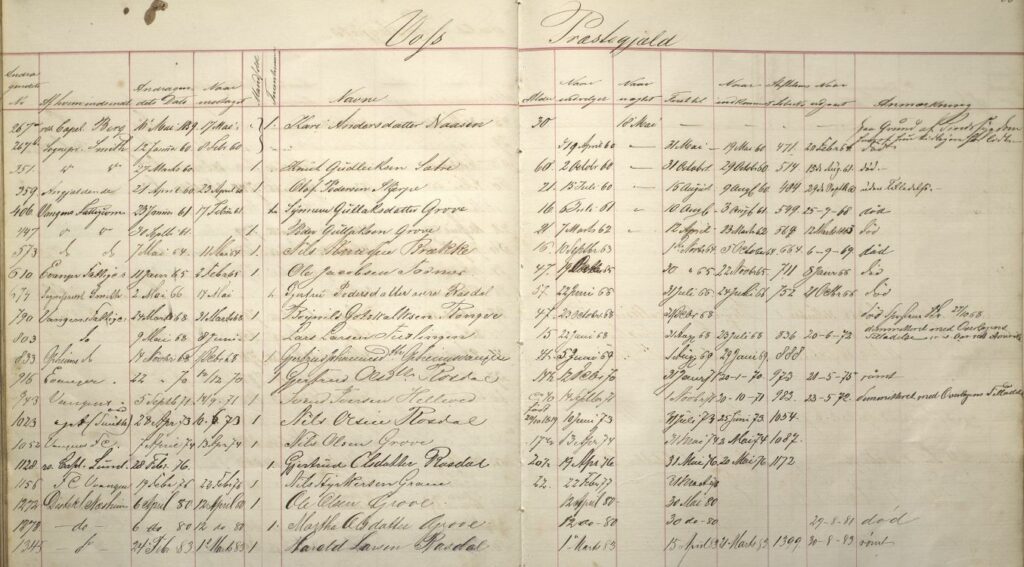
Bergen City Archives.
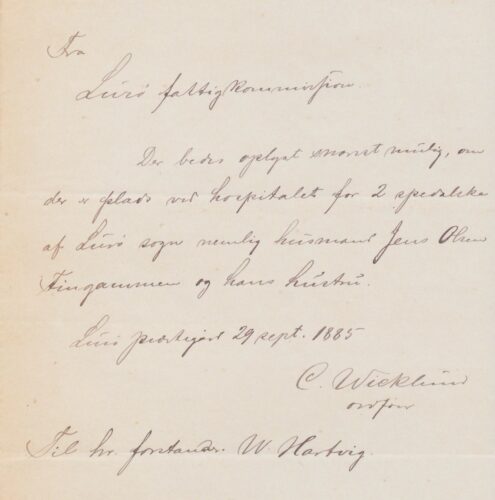
The Regional State Archives of Bergen.
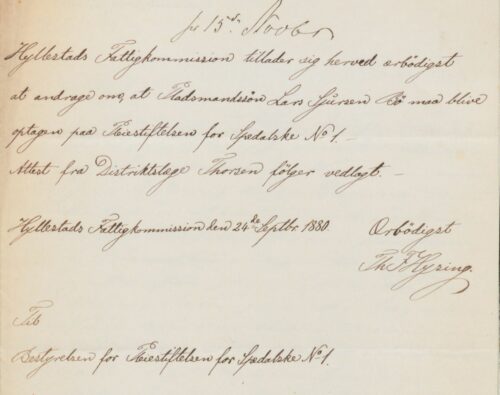
The Regional State Archives of Bergen.
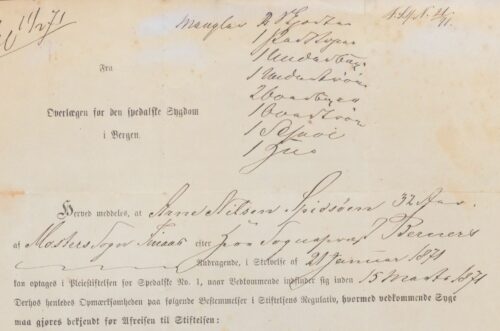
The Regional State Archives of Bergen.
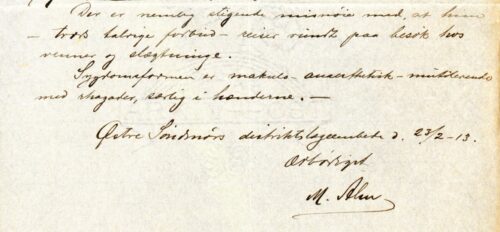
The Regional State Archives of Bergen.
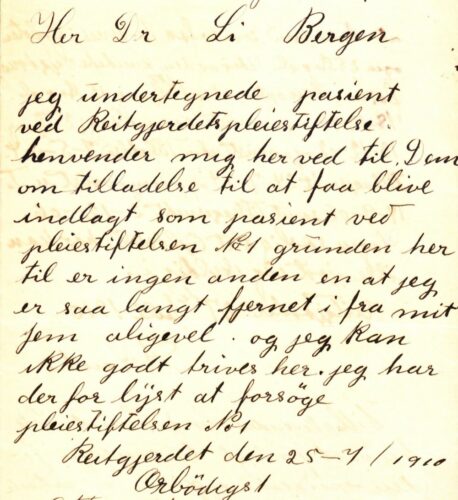
The Regional State Archives of Bergen.



